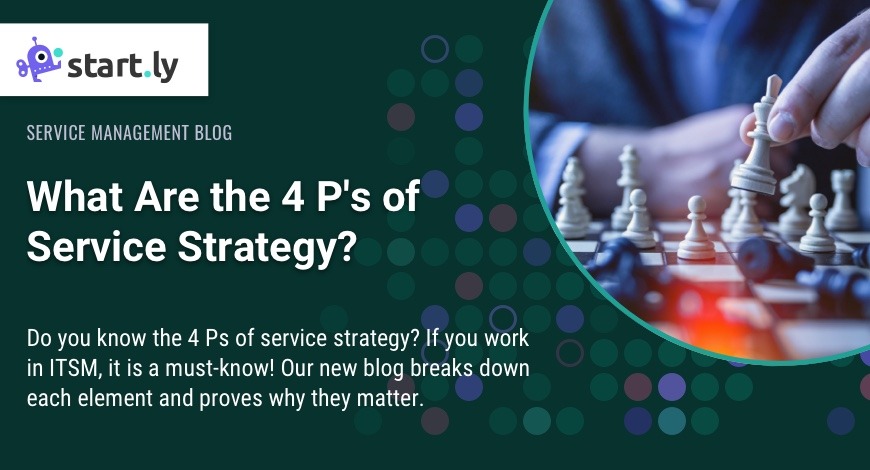Working in IT service management (ITSM) means having a full workload every day. From resolving an array of customer issues to configuring the best way to deliver IT services, the job of the ITSM team is never done. One way to help ease the workflow is to use a service management framework to help guide business decisions. What good is a framework without a killer strategy to boot? This blog is all about the 4 Ps of service strategy: perspective, position, plan, and pattern, and how they can help your company deliver the best IT services on the market.
The 4 Ps of Service Strategy
These four elements can stand as the foundation for your strategy, and they can be manipulated to fit the needs of your business. This stage of the ITIL service strategy helps maintain a flourishing IT service management ecosystem for both your own and your customer’s success. There are many different types of service strategy to choose from in this stage, but the 4 Ps have proven to be a best practice for defining what a service strategy should include. Let’s take a closer look at each of them.
Perspective
The perspective portion of service strategy encompasses the vision and direction related to your services. In essence, this is akin to a vision statement that you could find on a strategic plan for a business. Having a strong perspective will allow your organization to stand out from the competition by having a unique image come to mind for your customers. To get a clear picture of the perspective element, as it is the more abstract of the four, let’s use an example company. A performance testing firm for IT companies could have their perspective could their vision statement that was sent out to stockholders, and published on the landing page of their website. Thus, giving their customers a better understanding of the services they will provide.
Position
Position is how your organization will stand out from all other competitors in the IT services market. What is your unique value to the customer? Take the time to identify your market position. This will help inform decisions on both what and what not to do moving forward. Companies with a clearly defined market position empower the customer to better see your value compared to your competition’s.
Plan
The plan is relatively straightforward. It describes your business’s actions to achieve the established goals and objectives for the future. This portion of the service strategy will feature a heavy focus on aspects of the business like budgets, assets, portfolios, and expansions. A company with a detailed plan they can reference before any significant decisions are made will likely have a better opportunity to achieve its goals.
Pattern
Practice does not make perfect, it makes permanent. Pattern represents consistent actions that your company will make year in and year out—repetition of processes or business operations that yield successful outcomes. Perfecting these elements of your business can better align your vision and position within the market.
The prevailing IT service management framework that most strategies, including the 4 Ps, derive from is the Information Technology Infrastructure Library (ITIL). The main objective of the ITIL is to help organizations decide on the best method to serve their customers.
What Is a Service in ITIL 4?
Throughout this piece, we have mentioned ITIL, but what is its significance to ITSM? ITIL is a widely respected and adopted service management framework that guides companies on how ITSM can be delivered to customers. A company’s service strategies will usually adopt this system as a best practice. So what is ITIL 4? It is the newest version of the ITIL framework. This version shifted the focus to a more holistic approach to IT service management. ITIL 4 now features a four dimensions model to aid in the holistic approach. Those dimensions are:
- Value Streams and Processes
- Partnerships and Suppliers
- Information and Technology
- Organization and People
These four dimensions can apply to a single or entire service management system, depending on your needs and how you want to approach your services.
Startly: The Next Generation of IT Service Management
Startly is an all-in-one, fully integrated IT Service Management and Professional Services Automation platform. Our services can help companies with the following: tracking time, managing expenses, managing projects, ticketing, implementing change and asset management, and managing invoices and billing. Instead of making you switch between different software and platforms, Startly brings everything to one location.
Our team helps make the process of analyzing and determining the present IT infrastructure, services, and processes more manageable. We aim to empower your ITSM team with all the resources they could ever need to foster consistent customer success.
Contact us today to see what the future of ITSM holds!

